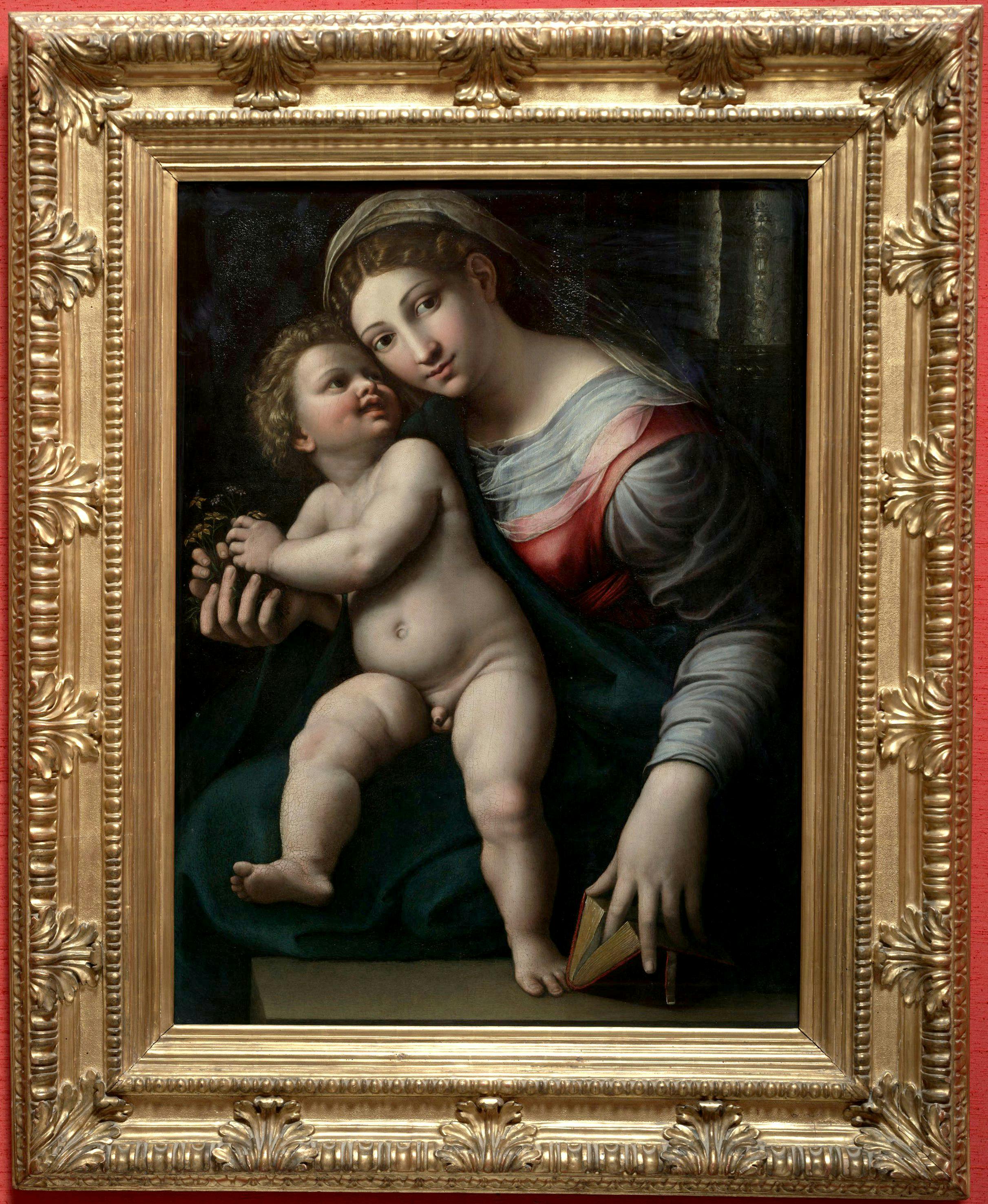Virgin and Child
Giulio Pippi, known as Giulio Romano (Rome 1499 c. – Mantua 1546)
Giulio Romano, with Perin del Vaga, Giovan Francesco Penni, Giovanni da Udine, and Polidoro da Caravaggio, was one of the most gifted painters in Raphael’s Roman studio. Romano’s Virgin and Child is inspired by Raphael’s better-known works, in which the master had explored the relationship between the Virgin and her son. Mary, with a majestic , strong, statuesque look, tenderly holds her son close, briefly setting aside her holy book. The artist has focused on the fingers clenching the small bunch of flowers that animates the scene, causing baby Jesus to laugh joyfully. In the background, the shadows reveal the forms of a simple interior, bordered by a strip of silver brocade fabric in the top right of the painting. Giulio Romano painted this panel during his time in Rome when, after Raphael’s death, he worked to complete the master’s unfinished commissions - such as the Room of Constantine and the decoration of Villa Madama - together with his fellow pupils from the studio, to whom Raphael had assigned independent roles in the design and execution phases of his works. The erudite, refined culture accrued by his pupils over these years would go on to form the foundations of the innovations developed by the leading figures of that period throughout Italy. This was especially true in the case of Giulio Romano, who moved to the court of Marquis Federico Gonzaga in Mantua, where he was responsible for the main urban renewal works, building Palazzo Te and painting the frescoes with spectacular mythological designs in the different rooms.
